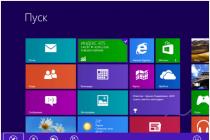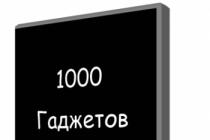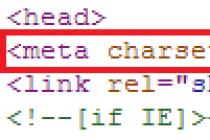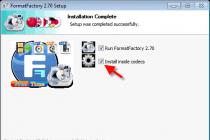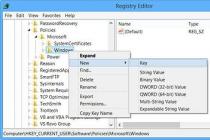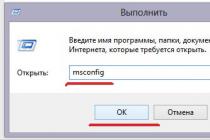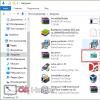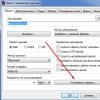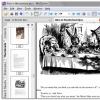"Forms of information models" - Types. Network information models. Properties. Communication of regional parts. List of objects of the same type. A table of the "object - properties" type. Object classifications. Types of information models. Hierarchical models. Information models. Objects. Static hierarchical models. Student. Dynamic hierarchical models.
"Models on Graphs" - Graph. The composition of the graph. The course of reasoning. Road map. Hierarchy. Task. Chain. Roads. Information models on graphs. Semantic web. Root. The relationship between a graph and a table. File structure. Tree. Weighted graph. Undirected graph. Roads between five settlements. Directed graph.
"Tabular Model" - "Home Library" table. Tabular logical information models. Teenager. Types of tables. Concepts for the Performance Table. Analysis of the baseline. Tables of the "object-property" type. Concepts for the "Books" table. Tables of type "objects-objects". Table "Progress". Tabular information models.
"Types of information models" - Tabular models. Verbal models. An example of an object-property table. Diagram. An example of a "binary matrix" table. An example of an object-to-object table. Drawing. Examples of graphic information models: Map. Graph. Graphic models. ToC. Time. Types of information models. Schedule. Temperature change graph.
"Graphical Information Models" - Part Drawing. Network and tree. Graphs. Crossing problem graph. Variety of graphical information models. Graphical information models. Schemes in physics. Motion description graph. The most important thing. Diagram. Geographic map of Eurasia. Questions and tasks. Keywords... Weighted graph. Using graphs for solving problems.
"Information models on graphs" - Information models on graphs. Draw the system as a graph. System analysis. A tree is a graph that has no loops. Basic concepts. What is a "graph". Plan. The solution of the problem. Present the plan in the form of a graph. Tasks. The information model of an object is its description. A structure is a specific order in which elements are combined.
There are 16 presentations in total
Grade 11
Lesson topic: Statistics. Statistical data. Building regression models using a spreadsheet processor.
Goals: Teach students to create and explore information models using spreadsheets.
Requirements for knowledge and skills:
Students should know:
Modeling stages;
stages of obtaining regression models.
Students should be able to:
Simulate in compliance with all stages;
Work in MS Excel application.
Software and methodological support: PC, spreadsheets MS Excel.
During the classes:
Org. moment(greeting, preparation of the workplace, boarding of students).
Lesson objectives: today in the lesson, we must learn how to create models that describe the relationship between the quantitative characteristics of statistical data.
Lesson Objective: to construct the most suitable model based on the offered statistical data.
Lesson topic: Statistical data. Building regressive models.
Repetition of the material learned.
Target: Knowledge control.
Method: testing.
Option 1
1. The model is the replacement of the studied object by another object, which reflects:
A) all sides of this object;
B) some aspects of this object;
B) essential aspects of the given object;
D) insignificant aspects of the given object.
2. The result of the formalization process is:
A) a descriptive model;
V) graphic model;
B) mathematical model;
D) subject model.
3.
The information model for organizing lessons at school is:
A) a set of rules for student behavior
C) the schedule of lessons;
B) class list;
D) a list of textbooks.
4. The material model is:
A) model of the aircraft;
B) drawing;
B) map;
D) diagram.
5. The genealogical tree of the family is:
B) network information model;
A) anatomical dummy;
C) ship model;
B) the layout of the building;
D) diagram.
7. Indicate in the modeling of the study of the temperature regime of the room
modeling object:
A) convection of air in the room;
B) room;
B) the study of temperature
D) temperature, room mode;
8. The correct order of the indicated stages of mathematical modeling of the process:
analysis of the result;
defining modeling goals;
conducting research;
search for mathematical description.
Matches the sequence:
A) 3-4-2-1;
B) 2 - 1 - 3 - 4;
B) 1 - 2 - 3 - 4;
D) 3-1-4-2.
9 . How many objects does a system typically consist of?
A) from several;
B) from an infinite number;
B) from one;
D) it is not divisible.
10. What is the name of the graph designed to display nesting, subordination,
inheritance, etc. between objects?
A) scheme;
C) a table.
B) the network;
D) a tree;
11.
An oral presentation of an information model is called:
A) a graphic model;
C) a tabular model;
B) verbal model;
D) a logical model.
12.
The ordering of information on a specific basis is called:
A) sorting;
C) systematization;
B) formalization;
D) modeling.
(Answers: 1-c, 2-b, 3-c, 4-a, 5-b, 6-d, 7-d, 8-a, 9-a, 10-b, 11-b, 12-a )
Option 2
1 . What is the name of a simplified representation of a real object?
A) original;
B) model;
B) prototype;
D) system.
2. The process of building models is called:
A) modeling;
C) experimentation;
B) design;
D) design.
3.
An information model made up of rows and columns is called:
A) table;
B) the scheme;
B) schedule;
D) drawing.
4. What is the general name of the models that represent a set of useful and
the information you need about the object?
A) material;
C) subject;
B) informational;
D) verbal.
5. The circuit diagram is:
A) tabular information model;
B) a hierarchical information model;
B) a graphical information model;
D) verbal information model.
6. The iconic model is:
A) map;
B) a globe;
B) children's toys;
D) the layout of the building.
7. Indicate in the modeling of the process of studying the temperature regime of the room the purpose
modeling:
A) convection of air in the room;
B) research temperature regime rooms;
B) room;
D) temperature.
8. The correct definitions of the concepts are given in paragraphs
modeled parameter - signs and properties of the original object, which should
be sure to have a model;
modeled object - an object or group of objects, structure or behavior
which is investigated by means of modeling;
law - the behavior of the modeled object.
A) 1 - 2 - 3;
B) 1 - 3;
B) 2-3;
D) 1- 2.
9.
The tool for computer modeling is:
A) scanner;
B) printer;
B) computer;
D) monitor.
10. What is the name of the tool for visualizing the composition and structure of the system?
A) table;
B) text;
B) graph;
D) drawing.
11. What are the names of the models in which, based on the analysis of various conditions
a decision is made?
A) verbal;
C) tabular;
B) graphic;
D) logical.
12. Solving the problem of automating ticket sales requires the use of:
A) graphic editor;
V) operating system;
B) text editor;
D) programming language
(Answers: 1-c, 2-a, 3-a, 4-b, 5-c, 6-a, 7-d, 8-d, 9-b, 10-b, 11-d, 12-d)
4. Learning new material
Statistics and statistics
Statistics - the science of collecting, measuring and analyzing massive quantitative data.
Consider an example from medical statistics. Experts have collected information from different cities on the average concentration of carbon monoxide in the atmosphere C and on the incidence of asthma (the number of chronic patients per 1000 inhabitants P.
Let's consider tabular and graphical presentation of statistical data.
С mg / m3
R bol. / Thous.
2,5
2,9
3,2
3,6
3,9
4,2
4,6
108
171
How now to build a mathematical model of this phenomenon? It is necessary to obtain a formula for the dependence of P on C. The plot of the desired function should pass close to the points of the experimental data diagram.
Basic requirements for the desired function:
It should be simple enough to be used in further calculations;
The graph of this function should pass near the experimental points so that the deviations of these points from the graph are minimal and uniform.
The function obtained in this way is called in statistics regression model.
2) Obtaining a regression model takes place in two stages:
Selection of the type of function;
Calculation of function parameters.
Most often, the choice is made among the following functions:
Linear function;
Quadratic function;
Logarithmic function;
Exponential function;
Power function.
In all these formulas, x is the argument, y is the value of the function, a, b, c are the parameters of the functions.
When choosing one of the functions, you need to select the parameters so that the function is located as close as possible to the experimental points.
Exists least square method(OLS). The bottom line is that the required function should be constructed so that the sum of the squared deviations of the y-coordinates of all experimental points from the y-coordinates of the function graph would be minimal.
Regression model plots are called trends... (The English word trend is translated as a general direction or trend).
Let us describe the algorithm for obtaining OLS regression models with trend construction using MS Excel.
We enter tabular data.
We build a scatter chart, where select the text "Linear trend" as the label for the OX axis (the rest of the labels and the legend can be ignored).
Click on the chart field; execute the command Diagram - Add trend line;
In the window that opens, on the "Type" tab, select "Linear trend";
Go to the "Parameters" tab and check the boxes "show equations on the diagram" and "put the value of the ampoxication reliability on the diagram R ^ 2 "and click OK.
Similarly, we get other trends.
We got a regressive mathematical model and can predict the process by calculations. It is now possible to estimate the incidence of asthma not only for those measured carbon monoxide values, but also for other values. This is very important from a practical point of view. For example, if it is planned to build a plant in a city that will emit carbon monoxide into the atmosphere, then, by calculating the possible concentration of gas, one can predict how this will affect the incidence of asthma among city residents.
Two ways to predict with a regression model:
Reconstruction of values is a forecast within the experimental values of the independent variable.
Extrapolation - Forecasting Beyond Experimental Data
We build the following ET:
21.845 * A2 * A2-106.97 * A2 + 150.21
Substituting the values, we get:
Carbon monoxide concentration (mg / m3)
The number of patients with asthma per 1,000 inhabitants
(The number turns out to be fractional, but we remove the fractional part - since this is the number of people)
Method 2: We continue the trend beyond the experimental data:
When extrapolating, one cannot stray too far from the experimental field. Beyond its borders, the nature of addiction can change
5.Computer workshop
Exercise 1 The table below shows the forecast of the average daily temperature for the last week of May in various cities of the European part of Russia. The cities are sorted alphabetically. The geographical latitude of these cities is also indicated. Build several variants of regression models (at least three), reflecting the dependence of temperature on the latitude of the city. Choose the most suitable function.
Latitude, gr.N.
Temperature
Krasnodar
Novorossiysk
Rostov-on-Don
Severodvinsk
Cherepovets
Yaroslavl
Task 2. Using the data on the average daily temperature in our city for the last week (10 days), by graphical extrapolation, try to predict the temperature in 2 - 5 days. Evaluate whether a linear trend description is appropriate for describing how temperature changes over time.
Temperature о С
Note:
It is more convenient to build a table in MS Excel as follows:
Temperature
Homework Come up with examples of practical problems for which it would make sense to perform value recovery and extrapolation calculations. (Data can be taken from statistical tables shown as examples)
6. Summing up the lesson
What new have we learned in the lesson? What have you learned?
So, today in the lesson we learned how to build regressive models based on statistical data and predict the further development of events in two ways. Grades will be awarded for the test + active work at the lesson.
We evaluate the work of the class and name the students who excel in the lesson.
Homework: Using the data in the following table, build linear, quadratic, exponential and logarithmic regression models using MS Excel. Determine the parameters, select the model.
Literature:
The theoretical and practical material is based on the material presented in the following publications:
Semakin I.G. Informatics grade 11
Chapter 2. Mathematical modeling in planning and management.
p.2.6. Representation of dependencies between quantities.
p.2.7. About statistics and statistical data.
p.2.8. Least square method.
p.2.9. Building regression models using a spreadsheet processor.
2) Semakin I.G. Information Systems and models. Elective Course: Study Guide
Chapter 2 Computer Mathematical Modeling
3) Semakin I.G. Information systems and models. Elective course: Workshop
Section 2 Computer mathematical modeling
4) Ugrinovich N.D. Research of information models. Tutorial
The organization model is a special systematized complex of the teacher's regularities during student learning, which is divided into two types: adragogical and pedagogical.
In general terms, the model represents different ways of representing reality. Each model has a specific look, shape, description and presentation option. In school institutions, for example, it is more likely to consider material and non-material information models. Any information model is a collection of information about an object, process, phenomenon, with the help of which it is possible to characterize the process taking place in nature. Thus, the lesson schedule is an information model for organizing lessons at school, because it carries organizational information for teachers and students. The information model in the field of education is various sciences - biology, botany, zoology and others, as they present information on external signs and characteristics in educational posters, illustrations on the subjects taught. Due to the totality of information models in all possible options, the younger generation forms an adequate assessment of the living or inanimate world.
Lesson summary on the topic
"Types of information models"
- educational: master the tabular and hierarchical presentation of the information model;
- educational: the formation of independence and responsibility in the study of new material;
- developing: to develop the ability to describe information models, highlighting the essential goals of modeling.
Software - didactic support of the lesson: PC, projector, screen, cards with the test and assignments.
Lesson type: learning new material.
During the classes:
- Org. moment: 2 min.
- greetings;
- checking those present.
- Updating previous knowledge: 10 min
Test (2 options)
Option 1
1. The model is the replacement of the studied object by another object, which reflects:
- all sides of a given object;
- some aspects of this object;
- essential aspects of this object;
- insignificant aspects of this object.
2. The result of the formalization process is:
- descriptive model;
- mathematical model;
- graphic model;
- subject model.
3. The information model for organizing lessons at school is:
- a set of rules for student behavior;
- class list;
- timetable;
- list of textbooks.
4. The material model is:
- airplane model;
- map;
- drawing;
- diagram.
5. The iconic model is:
- anatomical dummy;
- layout of the building;
- ship model;
- diagram.
6. Indicate the object of modeling in the modeling of the process of studying the temperature regime of the room:
- convection of air in the room;
- room;
- temperature.
7. The correct order of the indicated stages of mathematical modeling of the process:
1) analysis of the result;
2) conducting research;
3) defining the goals of modeling;
4) search for mathematical description.
Matches the sequence:
3-4-2-1;
1-2-3-4;
2-1-3-4;
3-1-4-2.
8. How many objects does the system usually consist of?
- of several;
- from one;
- from an infinite number;
- it is indivisible.
9. What is the name of the graph designed to display nesting, subordination, inheritance, etc. between objects?
- scheme;
- network;
- table.
- tree;
10. Oral presentation of the information model is called:
- graphic model;
- verbal model;
- mathematical model;
- logical model.
11. The ordering of information on a specific basis is called:
- sorting;
- formalization;
- systematization;
- modeling.
Option 2
1. What is the name of a simplified representation of a real object?
- original;
- prototype;
- model;
- system.
2. The process of building models is called:
- modeling;
- design;
- experimentation;
- design.
3. An information model consisting of rows and columns is called:
- table;
- schedule
- scheme;
- drawing.
4. What is the general name for models, which are a collection of useful and necessary information about an object?
- material;
- subject;
- informational;
- verbal.
5. The iconic model is:
- map;
- Kids toys;
- the globe;
- layout of the building.
6. Indicate in the simulation of the study of the temperature regime of the room the purpose of the simulation:
- convection of air in the room;
- study of the temperature regime of the room;
- room;
- temperature.
7. The correct definitions of the concepts are given in paragraphs
1) the modeled parameter - the characteristics and properties of the original object, which the model must necessarily possess;
2) modeled object - an object or a group of objects, the structure or behavior of which is investigated using modeling;
3) law - the behavior of the modeled object.
- 1-2-3;
8. The tool for computer modeling is:
- scanner;
- computer;
- a printer;
- monitor.
9. What is the name of the tool for visualizing the composition and structure of the system?
- table;
- graph;
- text;
- drawing.
10. What are the names of the models in which a decision is made based on the analysis of various conditions?
- verbal;
- graphic;
- mathematical;
- brain teaser.
11. Building a model in a formal language is called:
- sorting;
- formalization;
- systematization;
- modeling.
III. Learning new material: 20 min
Lesson topic message.
Let's analyze this life situation: you need to purchase a mobile phone. When buying, what do you pay attention to first of all (appearance)? What information matters?
This full information about the object? What is the best form of presenting information about appearance phone?
What else do you look for when buying a phone (phone function? What information does it matter?
The information is presented in the form of a table.
Parameter |
Parameter value |
Price |
|
Infrared port |
|
Talk time |
|
Vibrating alert |
|
Is this table the best way to represent the functionality of the phone?
In this example, two tabular models of one real object are built - a mobile phone. The first model is convenient in graphical representation, and the second in tabular representation. When building a tabular information model, the purpose of the model is of particular importance.
With the help of tables, information models are built in various subject areas, eg, in mathematics - multiplication table, chemistry periodic table, timetable of lessons, trains. For example, a tabular model of the cost of individual computer devices. The first column of the table contains a list of objects (devices that make up the computer, and the second - their price. Give an example of a tabular information model?
In the tabular information model, the list of objects or properties of the same type is placed in the first column (or row) of the table, and the value of their properties in the following columns (or rows of the table).
An object class is a set of objects united by some common properties.
Properties - characteristics, attributes of an object.
Each property has a name and value.
Find the Object Class, Object Properties from the following tables.
Annual estimates
Build a tabular model using positional number systems.

